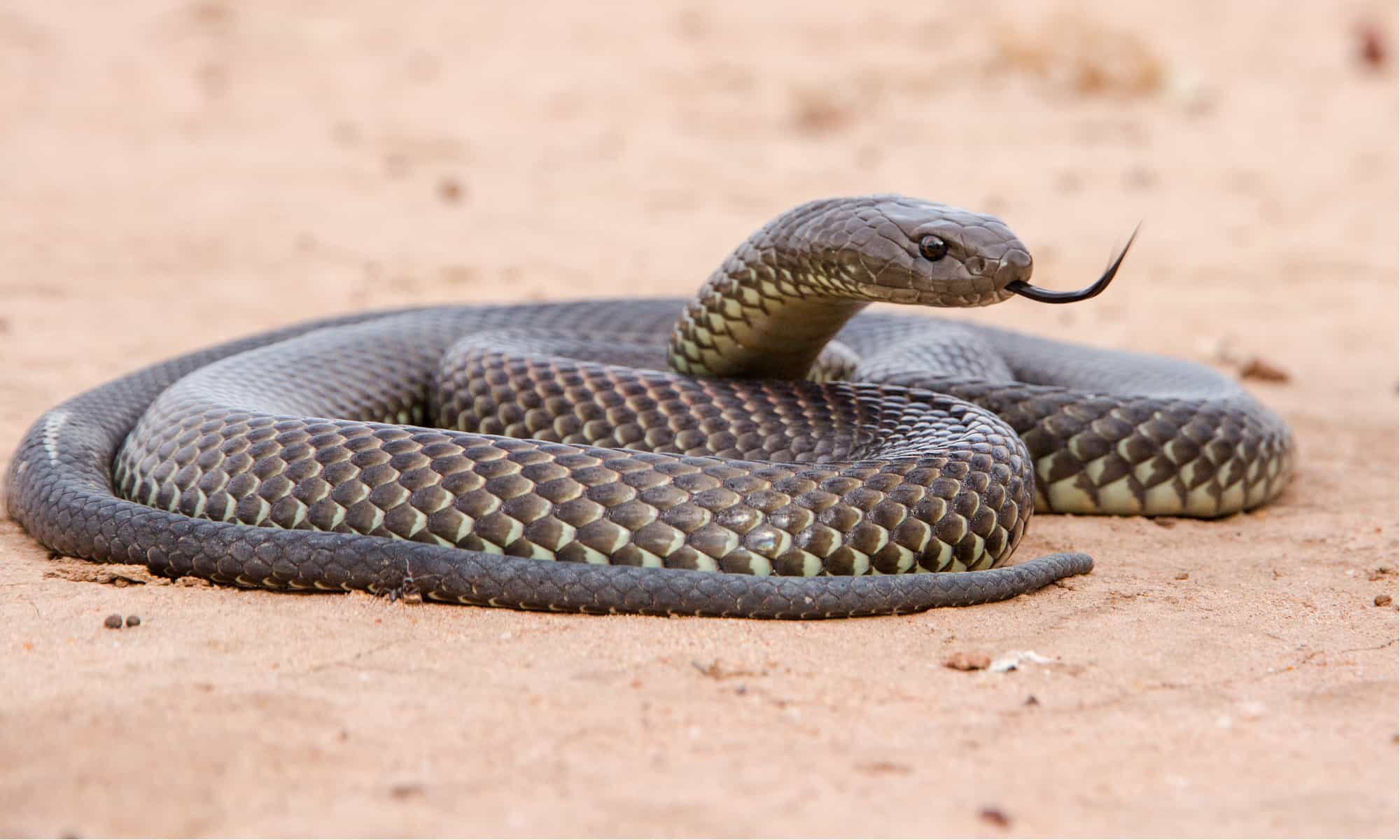
The King Brown Snake, scientifically known as Pseudechis australis, is a fascinating reptile that holds a prominent place in the animal kingdom. Also known as the Mulga Snake, this species is found in the arid regions of Australia, making it an iconic part of the country’s wildlife. With its striking appearance and unique characteristics, the King Brown Snake has captured the curiosity of many animal enthusiasts.
In this article, we will explore 14 fascinating facts about the King Brown Snake, shedding light on its behavior, habitat, and intriguing adaptations. From its impressive size to its venomous nature, this snake has plenty of interesting traits to learn about. So, grab your magnifying glass and get ready to delve into the world of the King Brown Snake!
Key Takeaways:
- The King Brown Snake, despite its name, is not a king or a brown snake. It’s actually a formidable predator with potent venom and a crucial role in maintaining the ecosystem.
- This protected species is an expert ambush predator, an adept swimmer, and has a unique defense mechanism. It plays a vital role in controlling populations and is essential for the balance of the ecosystem.
The King Brown Snake is not actually a king or a brown snake.
Contrary to its name, the King Brown Snake (Pseudechis australis) belongs to the black snake family and is often referred to as the “Mulga snake.” The name “King Brown Snake” stuck due to its formidable size and reputation.
The King Brown Snake is one of Australia’s largest venomous snakes.
Reaching lengths of up to 2.5 meters (8.2 feet), the King Brown Snake is a formidable predator and can deliver a potent venomous bite. It is known for its exceptional striking speed and accuracy.
The King Brown Snake has a wide distribution across Australia.
Found throughout most of mainland Australia, the King Brown Snake occupies a diverse range of habitats, including deserts, grasslands, woodlands, and semi-arid regions. It is most commonly found in arid and semi-arid areas.
The King Brown Snake is an ambush predator.
With its excellent camouflage and patient hunting strategies, the King Brown Snake waits for its prey to come within striking distance before launching a swift and deadly attack. It primarily feeds on small mammals, reptiles, birds, and even other snakes.
The venom of the King Brown Snake is highly potent.
The venom of the King Brown Snake contains a mix of neurotoxins and coagulants, which can cause severe damage to the nervous system and prevent blood from clotting. Immediate medical attention is necessary if bitten by this snake.
The King Brown Snake plays an important role in maintaining the ecosystem.
As a top predator, the King Brown Snake helps control populations of small mammals and other reptiles, contributing to the balance of the ecosystem. They play a crucial role in preventing overpopulation of certain species.
The King Brown Snake is an oviparous species.
Unlike some snakes that give birth to live young, the King Brown Snake lays eggs. The female will typically lay a clutch of around 10 to 20 eggs, which she will then guard until they hatch.
The skin of the King Brown Snake is highly prized.
Due to its attractive pattern and size, the skin of the King Brown Snake is often used in the production of luxury leather goods. However, it is important to note that capturing or killing these snakes for their skin is illegal in many regions.
The King Brown Snake has a unique defense mechanism.
When threatened, the King Brown Snake may raise the front part of its body off the ground, flatten its neck, and hiss loudly to intimidate potential predators. If the threat persists, it will resort to biting as a last line of defense.
The King Brown Snake has a long lifespan.
With proper conditions and sufficient food supply, the King Brown Snake can live up to 20 years in the wild. However, many do not reach this age due to predation and other environmental factors.
The King Brown Snake has an incredible heat-sensing ability.
Similar to other venomous snakes, the King Brown Snake possesses specialized organs called “pit organs” located on its face. These organs allow it to detect infrared radiation emitted by warm-blooded animals, aiding in hunting prey.
The King Brown Snake is a shy and elusive species.
Despite its fearsome reputation, the King Brown Snake is generally non-aggressive and will only bite as a defensive response. It prefers to escape when encountered by humans and will often retreat rather than engage in conflict.
The King Brown Snake is an expert swimmer.
Although primarily terrestrial, the King Brown Snake is known to be an adept swimmer. It can cross rivers and other bodies of water when necessary, using its muscular body and lateral movement for propulsion.
The King Brown Snake is a protected species in many regions.
Due to its ecological significance and vulnerable status, the King Brown Snake is protected under various conservation laws and regulations. It is illegal to harm, capture, or kill these snakes in many parts of Australia.
Conclusion
The King Brown Snake, also known as the Mulga Snake or Pilbara Cobra, is a fascinating reptile with several intriguing characteristics. From its impressive size to its venomous bite, this snake commands attention and respect. With a wide distribution across Australia, the King Brown Snake is a formidable predator known for its ability to adapt to various habitats. Its unique hunting techniques and reproductive behavior make it a subject of interest for researchers and snake enthusiasts alike.
While the King Brown Snake should be approached with caution and respect, it plays a vital role in maintaining the balance of ecosystems it inhabits. By learning more about this powerful and enigmatic creature, we can gain a deeper appreciation for the diversity and complexity of the animal kingdom.
FAQs
Q: How long can a King Brown Snake grow?
A: King Brown Snakes can reach an impressive length of up to 2.5 meters (8 feet), making them one of the largest venomous snakes in Australia.
Q: Are King Brown Snakes dangerous to humans?
A: Yes, King Brown Snakes are venomous and should be treated with extreme caution. While they are generally not aggressive, they will defend themselves when threatened.
Q: What do King Brown Snakes eat?
A: King Brown Snakes are carnivorous and primarily feed on small mammals, birds, lizards, and other snakes. They have been known to tackle prey larger than themselves.
Q: Are King Brown Snakes protected by law?
A: In some areas, King Brown Snakes are protected under wildlife conservation laws. It is illegal to capture, harm, or kill these snakes without the appropriate permits.
Q: Where can I find King Brown Snakes?
A: King Brown Snakes are found throughout various regions of Australia, including arid deserts, grasslands, and woodlands. They are most commonly spotted in Western Australia, Northern Territory, and Queensland.
Q: How long do King Brown Snakes live?
A: King Brown Snakes have an average lifespan of about 15 to 20 years in the wild, although some individuals have been known to live for over 25 years in captivity.
The King Brown Snake is just one of many fascinating creatures in the world of reptiles. Delve deeper into the captivating realm of these scaly beings by exploring more incredible facts about reptiles. Australia's diverse wildlife is also worth discovering, so why not take a virtual journey to Currumbin Wildlife Sanctuary and uncover its mind-blowing secrets? For those with a passion for the scientific study of reptiles and amphibians, don't miss out on the opportunity to expand your knowledge by diving into the intriguing world of herpetology.
Was this page helpful?
Our commitment to delivering trustworthy and engaging content is at the heart of what we do. Each fact on our site is contributed by real users like you, bringing a wealth of diverse insights and information. To ensure the highest standards of accuracy and reliability, our dedicated editors meticulously review each submission. This process guarantees that the facts we share are not only fascinating but also credible. Trust in our commitment to quality and authenticity as you explore and learn with us.


